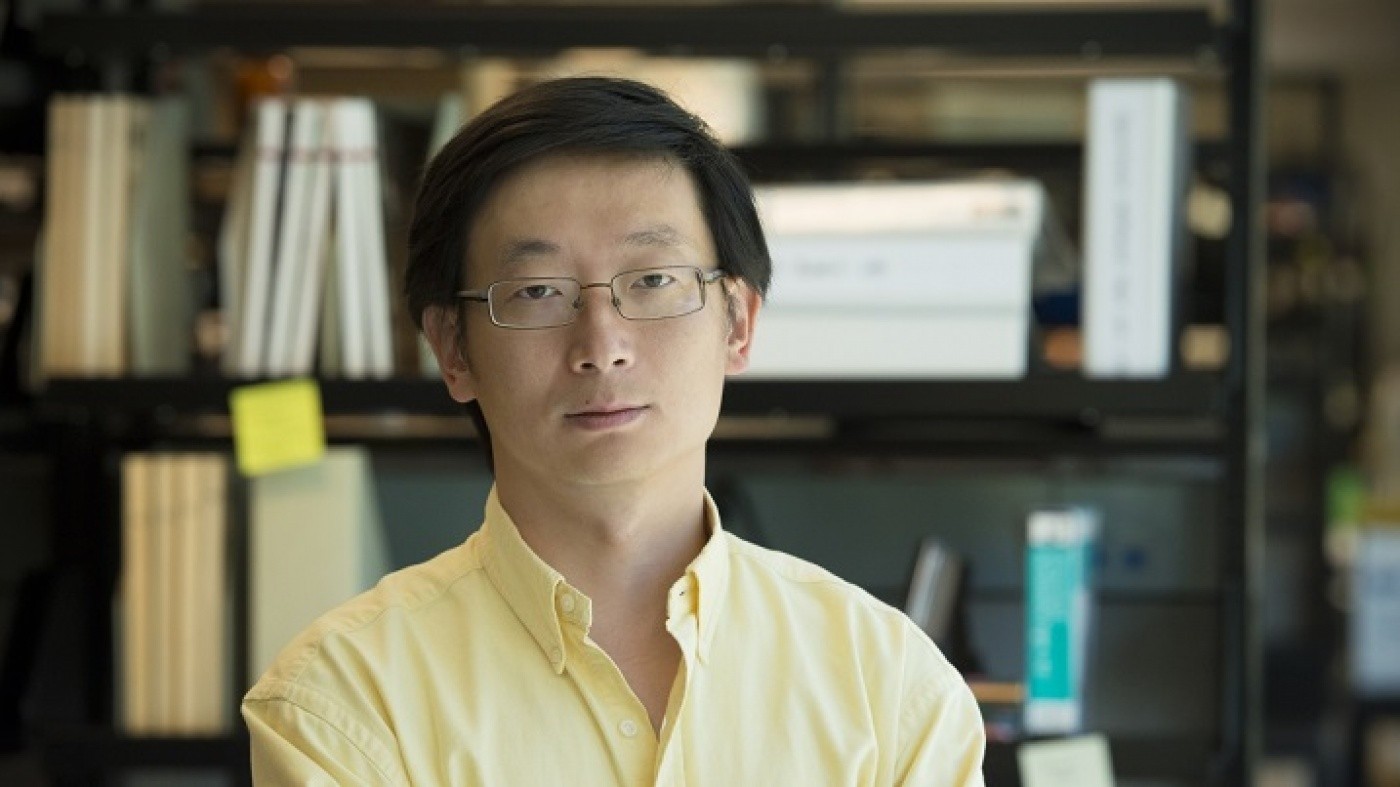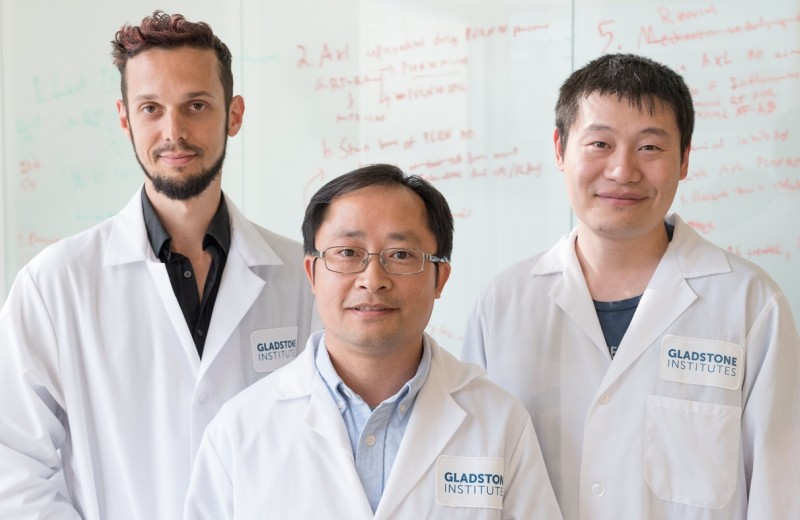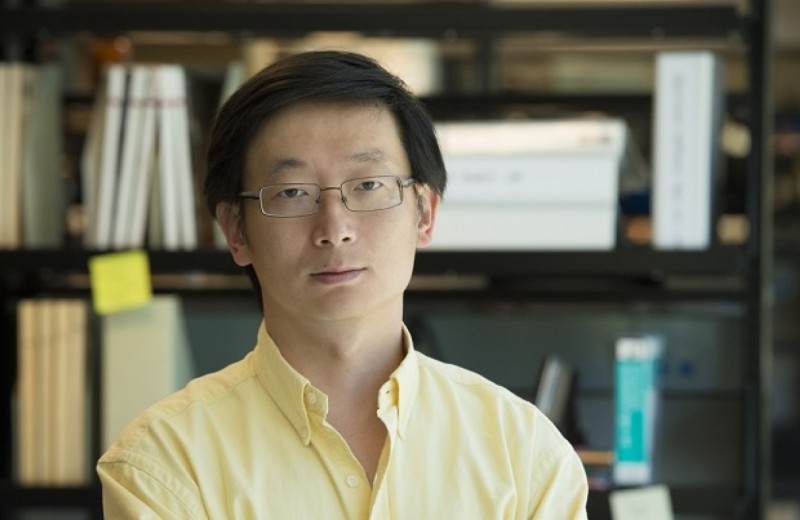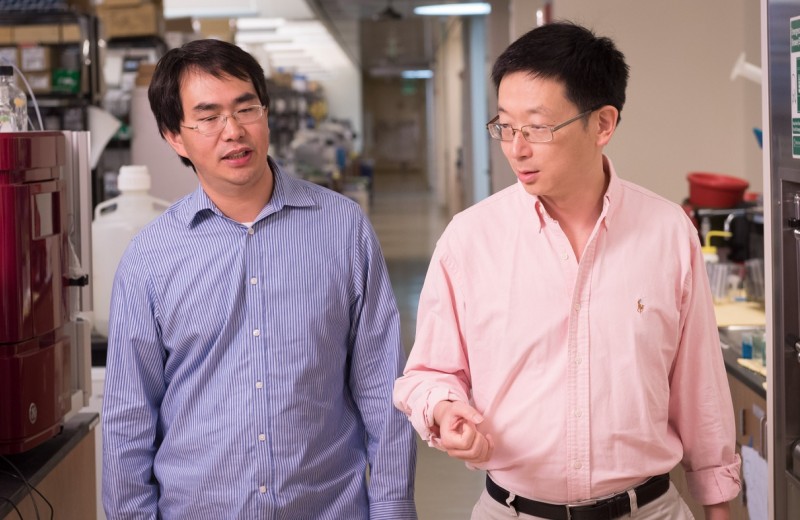Gladstone NOW: The Campaign Join Us on the Journey✕

Stem cell scientist Sheng Ding has used his unique drug cocktails to turn skin cells into brain, heart, liver, and insulin-producing pancreas cells. Dr. Ding is now applying his method to spinal cord injuries, regenerating cells that may someday allow patients with these injuries to regain mobility. [Photo: Chris Goodfellow]
Advances in medical research have turned scientists into modern day alchemists. Using unique drug cocktails, stem cell scientist Sheng Ding, PhD, a senior investigator at the Gladstone Institutes, can transform fibroblasts (skin cells) into fully functional brain, heart, liver, and insulin-producing pancreas cells.
Dr. Ding’s work revolves around chemical reprogramming—the use of small molecule drug mixtures to coax fibroblasts into becoming a variety of other cell types. His method skips some of the time-intensive steps involved in more traditional stem cell approaches.
“Eventually, patients with a broad array of diseases may be able to transform their own cells simply by taking a pill,” says Dr. Ding.
Novel Drug Mix Yields New Neural Cells
Dr. Ding is now applying his method to spinal cord injuries, regenerating cells that may someday allow patients with these injuries to regain mobility.
For patients with spinal cord injuries, chemical reprogramming promises to repair their damaged neural pathways. In an undamaged pathway, a type of brain cell called an oligodendrocyte produces myelin, an insulating substance that wraps around long nerve fibers called axons. Myelin allows the axons to transmit signals throughout the central nervous system (CNS). Following a spinal cord injury, oligodendrocytes break down and die, preventing axons from receiving the myelin they need to send signals.
In his laboratory mice, Dr. Ding has now used chemical reprogramming to turn fibroblasts into neural "precursor" cells with the potential to become new oligodendrocytes. Moreover, he has achieved this result using a highly refined version of his reprogramming method that is even safer and more effective than his original technique. While his previous method relied almost entirely on small molecules, it still included a minute amount of genetic manipulation; that is, he often required the use of a single gene to enhance his chemical cocktails.
Recently, Dr. Ding achieved entirely gene-free chemical reprogramming, using only drugs to turn fibroblasts directly into brain cells. Without genes in the mix, he now has total control over the reprogramming process in a precise, temporal manner: because his chemical cocktails act in finite intervals, the body will no longer be exposed to the drugs when their time is up. Ultimately, patients can avoid the type of long-term exposure that makes genetic manipulation more risky. This work represents a fundamental paradigm shift into fully pharmacological reprogramming.
New Project Aims to Eliminate Post-Injury Scarring
Going forward, Dr. Ding plans to explore a second route to spinal cord repair involving axons, which possess an innate ability to regenerate. In patients with spinal cord injuries, these regenerated axons still face an insurmountable obstacle—a field of scar tissue that forms following the injury. Containing an inhibitory form of CNS glial cells, the scarred area is a dead zone for axonal signals, preventing the signals from passing through to other parts of the CNS.
Dr. Ding will soon begin to use regenerative medicine to transform these inhibitory glial cells into a non-inhibitory CNS cell type, eliminating the field of scar tissue and permitting the transmission of axonal signals.
“Because the inhibitory cells are already of neural lineage, the transformation will likely be less complex than turning fibroblasts into oligodendrocytes,” Dr. Ding says. “The latter is a demanding process that requires crossing the lineage boundary.”
These highly promising efforts to reverse post-injury scarring are giving new hope to all those who suffer from spinal cord injuries.
Roddenberry Gift Ushers Gladstone Stem Cell Research into the Future
Roddenberry Gift Ushers Gladstone Stem Cell Research into the Future
The path to medical breakthroughs lies in bold, ambitious science
Donor Stories Institutional News Spinal Cord Injuries Alzheimer’s Disease Diabetes Roddenberry Stem Cell Center Bruneau Lab Ding Lab Huang Lab McDevitt LabResearchers Create First Stem Cells Using CRISPR Genome Activation
Researchers Create First Stem Cells Using CRISPR Genome Activation
Activating a single gene is sufficient to change skin cells into stem cells.
News Release Research (Publication) Cardiovascular Disease Ding Lab CRISPR/Gene Editing Stem Cells/iPSCsStudy Reveals How to Reprogram Cells in our Immune System
Study Reveals How to Reprogram Cells in our Immune System
The discovery could improve treatments for autoimmune diseases and cancer
Ding Lab Stem Cells/iPSCs Immunology



